Copyright © 2025 Motivate Media Group. All rights reserved.
Exploring the luxurious future of interior design in 2024
Leading interior designers in high-end hospitality and residential design share emerging trends
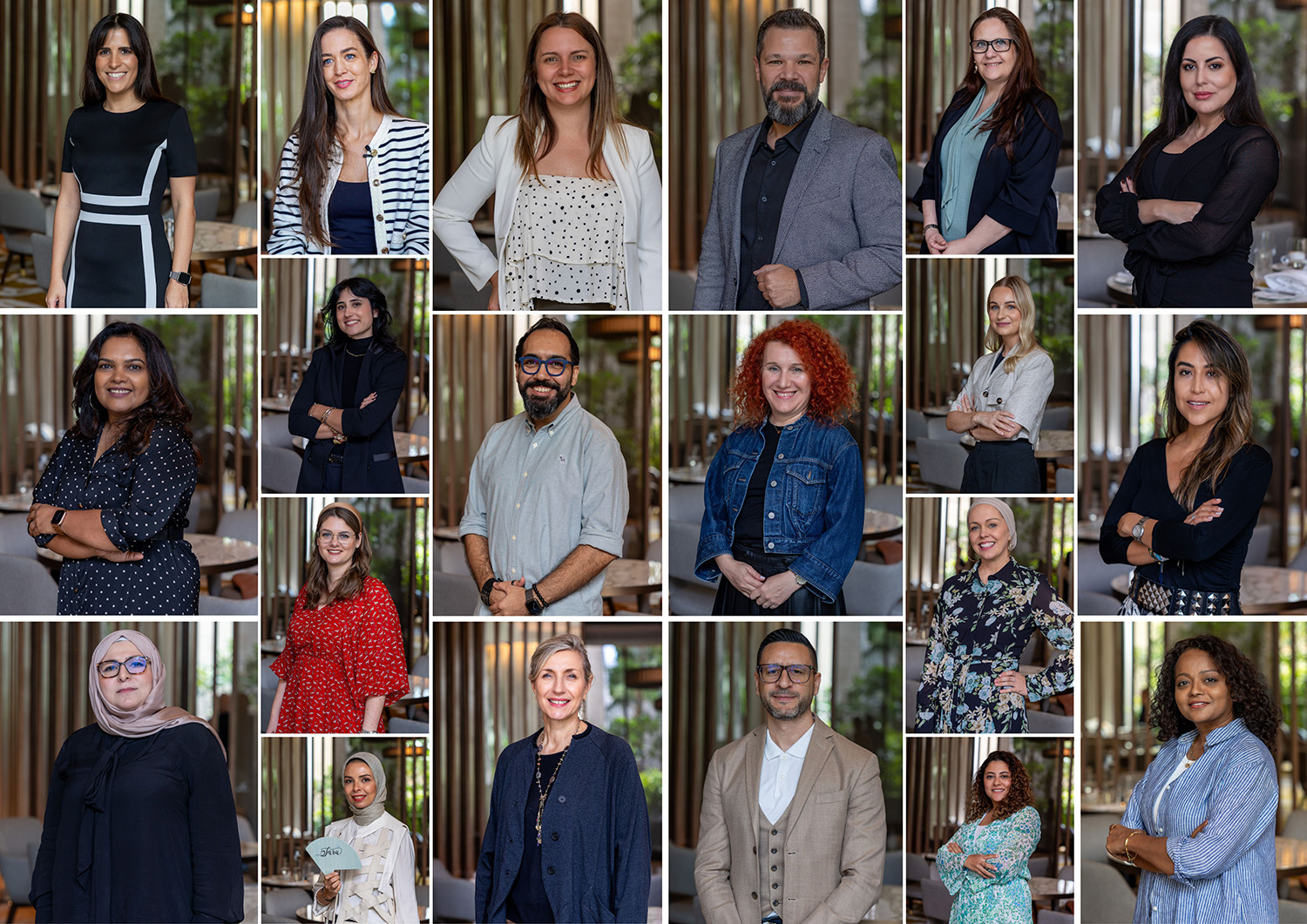
In a world where luxury and innovation converge, the field of interior design is experiencing a remarkable transformation. NGC Nafees, a Dubai-based distributor of walls, floors, and fabrics, and Tapetex, a renowned Dutch high-end wallpaper manufacturer, in collaboration with Intelier and Identity magazine brought together a selected group of leading interior designers and thought leaders, specialising in the hospitality and residential sectors. We asked these experts to offer insights into the emerging trends in high-end interiors in 2024.
From bold colours, timeless aesthetics, and immersive experiences, within this exclusive report, we delve into their forecasts for luxury design, encompassing a shift towards bolder colours, personalisation, experimentation and a seamless fusion of technology and artistry.
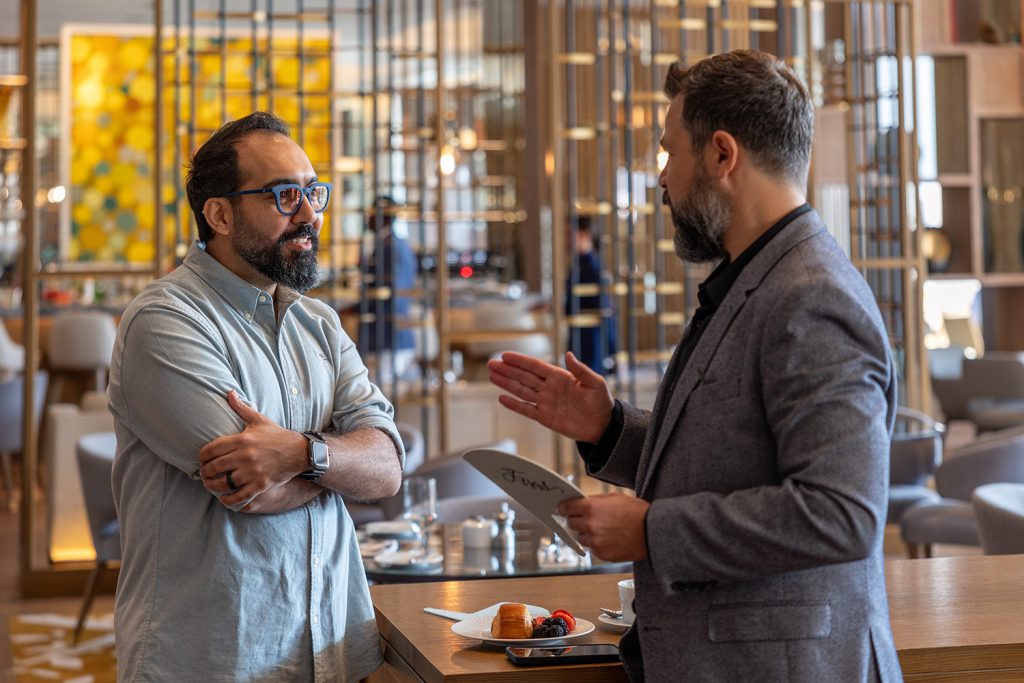
Rakan Jandali, design principal and creative director at KCA International:
“The most significant shift is that we’re moving away from exclusively creating safe designs, which predominantly focus on tonality and monochromatic interiors. So, no more reliance on just beige and gray tones. Now, we are encouraged to experiment more with colors and textures, introducing a layering effect in our interiors. This allows for specific elements, such as a cushion or a feature wall, to become a part of your DNA for the entire hotel design.
When discussing hospitality, and similarly for residential projects, clients are now seeking more bold colors, bold interiors, and experimental designs, moving away from the previously safe designs. This is the direction we’re heading in. Most hotels and operators aim to maintain their brand and the iconic look and feel of the brand.
However, with our creativity as designers, we can always enhance this experience and look by incorporating our own design languages and DNA.
Indeed, we will be moving away from minimalist, safe designs toward more intricate layering and additional details. We will see an increase in the use of metal inlays, diverse textures, and timber inlays in our ceiling and wall designs.”
Firas Alsahin, co-founder and design director of 4SPACE Design:
“I believe we are transitioning towards a concept of quiet luxury, characterised by timeless interiors. We’re likely to witness an increase in silver accents, moving away from goldish surfaces. Decorative surfaces will remain prevalent, perhaps with a focus on sculptural furniture pieces, and we will definitely see vintage elements being incorporated into interiors. Imagine integrating vintage lighting from the Italian and French eras of the 1950s into a beautiful, timeless space, possibly featuring marble surfaces and marble furniture pieces, adding a sculptural element to the interiors.
So, it seems we are still favoring warmth, natural hues, and materials and these elements are expected to be prominent in the forecast for luxury interiors.”
Julijana Mitic, design director at Gensler Middle East:
“I would say hospitality is definitely going to focus heavily on experience. Therefore, all materials that contribute to this experience, whether through touch and feel, play a significant role. Trendy colors may come and go, but I believe the involvement of local artists and heritage can provide a unique identity to a place, based on its location and context. This approach could significantly enhance the experience for people. Involving local artists and materials, which also ties into sustainability especially after COP 28, will be crucial.
Other trends will obviously include AI, incorporating everything from social media to creating ‘Instagrammable’ moments. This isn’t new, but anything that contributes to this, be it materials, sculptures, or installations, will remain relevant for some time. AI’s role extends beyond operational aspects in hotels to utilizing data for personalized experiences and solving robust problems.
The driving force behind hospitality will be the overall experience, whether it’s geared towards health, visual appeal, or emotional well-being. This, I believe, will be the main driver.”
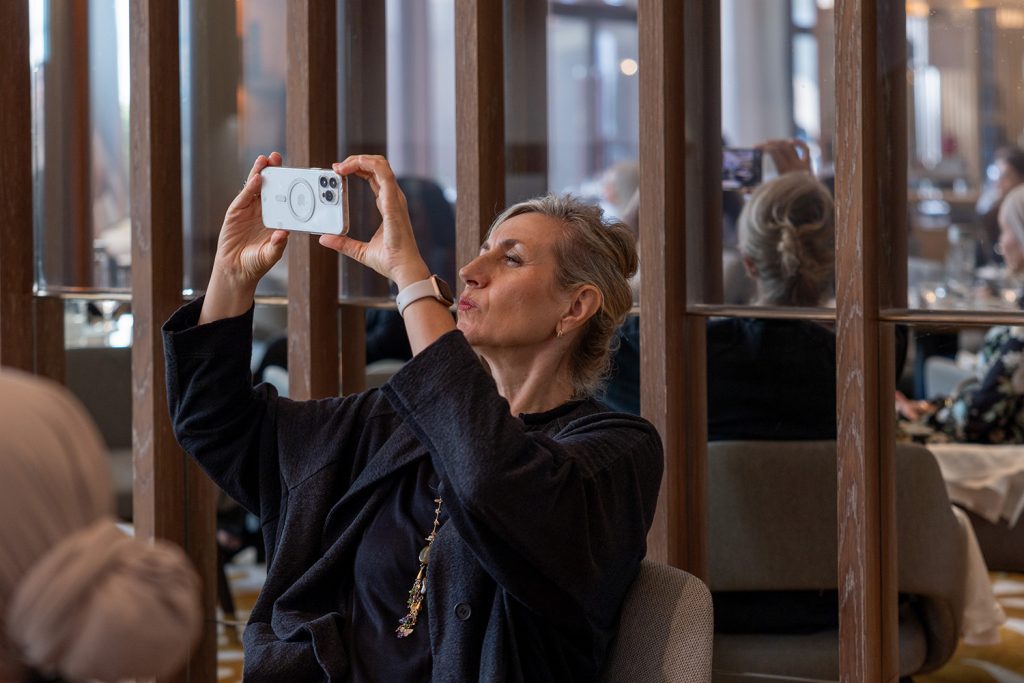
Kristina Zanic, founder of Kristina Zanic Consultants:
“I’d like to see a much more eclectic design approach, one that is bold and dynamic. I believe that’s the direction in which design is heading. People are becoming more daring, so I’m hopeful that we will start to move away from overly calm interiors.
For me, luxury is fundamentally about space, not necessarily the colors or materials used. It’s about how we utilise that space. That’s what luxury means to me.”
Carla Conte, founder and creative director of Brand Creative:
“I think the last two years have seen a lot of the quiet luxury kind of experience, with soft tones, tone-on-tone, the neutrals, and the beiges. We’ve definitely worked on a lot of them ourselves. But I do think that 2024 will be a celebration of richer tones in terms of colors and textures. I think people are going to be a bit more bold and dynamic with layering. Certainly, we love to do that in our own studio, with color and different textures, working with fabrics and wall coverings to create a layered effect.
And I do think some of the best designers know how to layer, with lots of different elements. It’s just like developing a story. We all talk about narrative and building a narrative. It’s the same with space. There’s always a canvas of some sort, but from there, you build on it.
And I believe the richer tones, especially when it comes to accessories and art, will see a unique approach. Instead of calling it a trend, a more authentic approach to art and accessories will be taken, where things will be much more personalized and may touch on history and things like that.”
Riham Farajy, senior project designer at David Tkint studio:
“As a design studio specialising in luxury design and lifestyle projects, we are deeply interested in storytelling or crafting narratives through our work.
For luxury design, it’s primarily about the experience itself. I believe guests now seek to immerse themselves fully in that experience. The more impressive the experience, the better guests feel about the design, particularly when discussing luxury.
It also encompasses comfort, the overall ambience, and the sense of relaxation, which can vary from one guest to another based on their background or what they are seeking. Regarding colours, neutral and muted tones have been prevalent in previous years.
However, I feel that natural colours are still present but now in a bolder form, such as earth tones with more vibrancy, like terracotta and deep green, mixed with some muted metals. This represents the evolving luxury trend in colour schemes.”
Susana Aldrabinha, interior designer at DLR Group:
“So, I feel like we’re at a point where what is termed ‘quiet luxury’ prevails, yet we’re incorporating a lot of technology into our projects in a manner that allows us to blend the culture of the space seamlessly, achieving a very understated tone, not overtly bold with the colours we use. However, we do employ accent colours, predominantly in hospitality, which is very much about creating tranquil spaces. These spaces merge with the local culture, allowing us to insert numerous small details and utilise what technology offers us today, thereby reinventing our approach to design daily.
For this year, regarding pops of colour, we’re likely to see shades of jewel yellows and even the new Pantone colour, which leans towards salmon, introducing warm colours into a neutral palette.”
Mehmet Aktash, managing director at Bishop Design:
“I think a lot of what’s happening in this community, in the design world at the moment, is we’re seeing a lot of collaborations. And I think what’s shifted is that we’ve seen luxury, obviously luxury products, luxury brands in the industry, in the market for a long time.
And now we’re seeing them wanting to create their own environments and really bring their touch of luxury into a lifestyle, into an environment. So, we see more collaborations, and I think even today is a great example of collaborations and the people that are involved today. And that’s what is driving, I guess, a lot of the projects that we’re certainly involved with and even independently. We are now seeing branded residences in isolation, without the hotel attachments to these spaces.
So that’s what I think is probably the biggest trend that we’ve seen in terms of the diversity of projects and the projects that we have on board.”
Dina Murali, design director at DZ Design:
I can see an emergence of traditionalism, coupled with a fearlessness in using color. Moreover, luxury spaces are no longer just designed but also decorated. There’s a re-emergence of antique pieces in very contemporary spaces and great detailing, such as gypsum on the ceiling. However, it still incorporates contemporary features, indicating a mix of design trends, which is emerging and pleasant to observe. I see a lot of jewel colors coming through; I’ve been dabbling in a lot of amber and ruby. Another trend I find really interesting for 2024 is the predominant mixing of metals. Here, and in the gorgeous Atlantis piece we added, there’s a blend of stainless steel, chrome, and a mix of bronze, brass, and copper. I would really welcome moving away from everything being tone-on-tone and matchy-matchy, if you will.
I feel luxury has always been present, but now there’s a significant emergence of expressing oneself and letting personality shine through in spaces. Personal touches to any space are now embraced without hesitation.”
Monica Twaroski, design director at EMA Studios:
“I’d say there’s obviously a push for sustainability, but I think what’s important is the honesty in sustainability, not just using it as a slogan, but actually executing on it. This includes where the materials are coming from and how they are being produced. Taking it a step further involves maintaining the purity of craftsmanship within those materials and reverting to basics for the longevity of materials.
Because quite often, I’m not necessarily fond of the word “trend” because it implies something temporary that will come and go. But I think adopting a holistic approach is what’s needed, aiming for what could be called the ‘slogan of the day.’ I found ‘classic craftsmanship’ quite fitting. It embodies the honesty of the material and the work, including when it’s produced locally.
I think there’s more layering now. You have the simplicity of materials, and this simplicity is what gives them longevity because it’s timeless. However, layering them with textiles or wall coverings offers a classical look as well, but brought in a modern way that’s refined and not over-cluttered, yet refreshing.”
Melani Sabhaney, founder and partner at Interspace:
“In 2024, things appear quite peaceful. The trends and colors emerging in both hospitality and residential sectors are soft, more natural, and textured.
I observe a significant demand for colors like sage and stone—soft hues, but interior design often tends to follow fashion to some extent. Thus, there are always strong pops of red or other elements trending in fashion that gradually seep into interiors and hospitality. That seems to be the current trend.
Luxury, to me, is conveyed through feeling. It’s always about how you feel in a space. A simple place can exude luxury, and that’s down to the colors and textures introduced into that environment. It’s not really about the bling. It’s about how one feels in the space. That’s what luxury represents to me.”
Lara Francis El Hani, senior design manager at Kling Consult:
“People are becoming more perceptive about luxury. They visit places and return with newfound knowledge. However, a new trend is emerging where more natural finishes are making a comeback. We’re seeing an increase in textures, subtle colors, and even a bit of ethnic or beachy colors, such as sandy tones. Warm tones are returning, contrasting with some vivid colors typically not associated with luxury.
Luxury embodies timelessness and elegance, along with value in the finishes. There’s a resurgence of colors. The color of the year has been trendy since last year, so its continued popularity isn’t surprising. Nowadays, it’s not just about the main color of the year but the entire palette that accompanies it. These tones provide contrast and complement each other, contributing to the overall atmosphere, infused with feelings and emotions.”
Monica Arango, founder of Cestici Design:
“I believe that this year we’re truly craving for personality, an original vintage look that weaves the past and future together.
I’m not keen on using the word ‘trends,’ but it’s evident that design is gravitating towards craving for personality, embracing uniqueness, and not shying away from mixing colors and patterns. In terms of the color palette, we’re advancing towards a preference for chocolate tones, rich browns, high-end use of walnut, and the profound depths of dark woods. Regarding color trends, which I’m not fond of, it’s clear we’re revisiting that French look and feel, reminiscent of vintage aesthetics.
Overall, I believe 2024 will be about discovering your own personality, not just discussing styles, but truly creating a harmonious composition.”
Giulia Quaglia, senior associate at XBD Collective:
“My color for 2024 will be green in all shades. I believe we will see an increase in colors, patterns, and textures, definitely. It seems we are transitioning from the beige era to something a bit more playful and engaging.
I wouldn’t label it as maximalism, but rather a gradual shift in that direction, which undoubtedly makes our work much more enjoyable.
For me, luxury embodies timeless comfort. It’s about creating an environment that feels like home, particularly since I focus on residential projects, yet also places you in a distinctive and intriguing space.
It’s a comprehensive experience of colors, textures, and uniqueness. This is what luxury represents to me.”
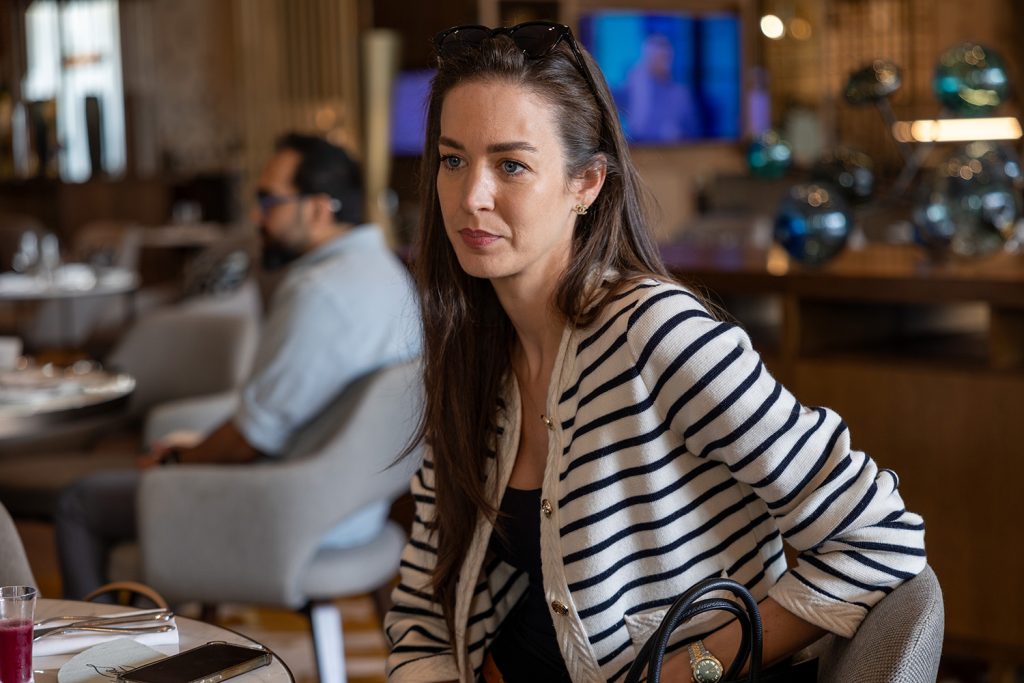
Tanya Ivin Karam, founder of Interior Takeover:
“For 2024, in luxury interiors, I anticipate a significant trend towards more natural materials. This includes a shift towards earthy tones and raw textures. Personally, I’m observing a slight decline in the popularity of large slabs of tile and porcelain tile.
I’m increasingly drawn to the authenticity of real marble and stone, appreciating their depth and texture. This preference extends to wall coverings as well.
In 2023 and 2022, we witnessed a dominance of whites, off-whites, and very light tones.
For 2024, I foresee colors becoming stronger and darker while maintaining a very natural feel. My personal favorite color for 2024 is akin to burnt caramel. It leans towards brown but incorporates a hint of slightly rusty orange. This color is incredibly warm, cozy, and adds an elevated touch to any space.”
Aleena Waqas, founder of AW Interiors:
“So, what’s really capturing the luxury interiors currently are the rich, dark tones such as charcoals, blacks, along with deep, moody emerald purples and navy. These colors are defining the aesthetic of this year, offering a deeply intimate vibe that invites individuals to immerse themselves in a space that feels both personal and expansive. This palette allows for sophisticated interplays of lighting and textures, creating environments that are enveloping, dark, and incredibly moody.
Moreover, a significant trend I’m observing is the integration of digital art into interior spaces. This movement towards incorporating digital art, along with innovative lighting effects, is setting a modern and urban tone. It’s not just about the aesthetic appeal but also about creating dynamic spaces that reflect contemporary life, blending art and technology in ways that are cutting-edge, trendy, and uniquely expressive.”
Alexandra Mojse, founder of MOY design studio:
“There’s still a notable preference for neutrals among our clients. This choice resonates with them as it brings a sense of calm and peace to their living spaces, resembling the tranquil ambiance of a spa. Interiors are often accentuated with elements like stone, marble, and an abundance of wood. The incorporation of wood contributes to the concept of biophilic design, blurring the lines between the outdoors and indoors, a feature that modern clients are increasingly seeking.
Additionally, the Pantone Colour of The Year – Peach Fuzz is making its presence felt. It remains to be seen how clients will respond to this particular shade, but I believe it has the potential to enhance the natural look and feel of spaces, infusing them with vibrancy. Accents, including items like wallpaper and cushions, play a significant role. These elements provide the flexibility to adapt the space over time, which is important as some colors may fall out of favour.”
Bethany Lockhart, interior designer at Ele interior:
“The trend that I foresee for 2024 is continuation form last year and is centered around a sense of quiet luxury. This approach places a strong emphasis on heavy textiles, wallpaper, and a neutral, minimal base. The idea is to accentuate and elevate the luxury factor by incorporating statement furniture pieces and modules.
In the realm of residential design, this trend remains prominent. People are keen to achieve a hotel-like ambiance that exudes timelessness. Furniture pieces are selected with versatility in mind, allowing for easy interchangeability.
Furthermore, there’s a notable focus on incorporating exotic marble pieces, whether in walk-in spaces or as striking additions to coffee tables, creating statement pieces that elevate the overall aesthetic.”
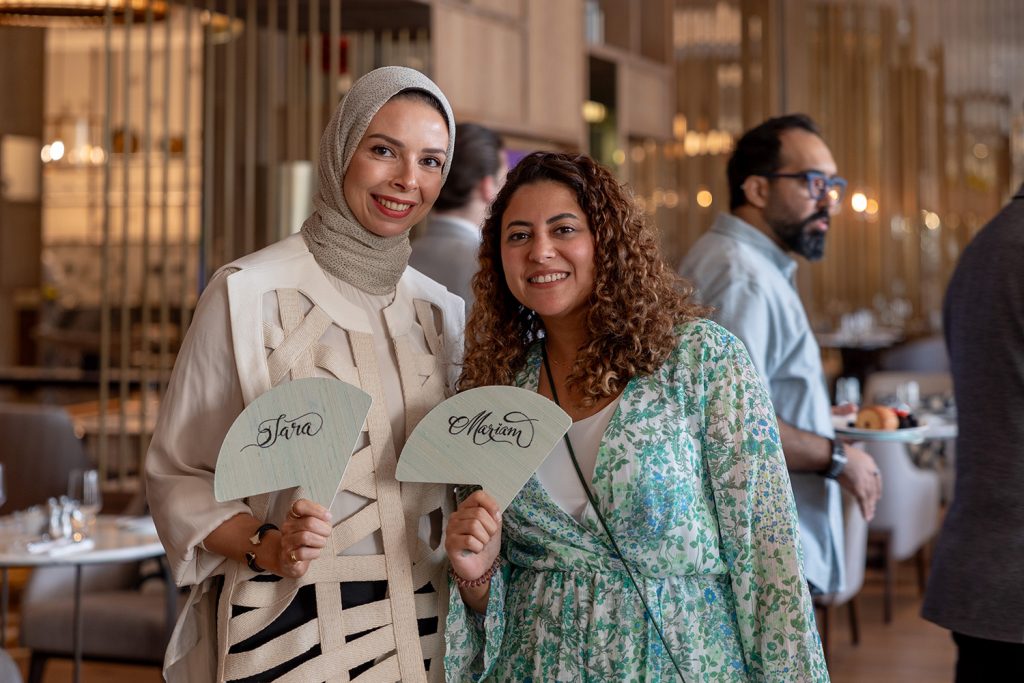
Mariam Abouelfotouh, founder of Interior Flavor:
“I believe that the overall interior trends for 2024 will emphasise a sense of quiet luxury, prioritising quality over quantity. This approach extends to the quality of materials and fabrics used, as well as the colour palette. Personally, I’m inclined towards warmer reds and browns, which are making a comeback and are expected to trend in 2024.
To me, luxury in food is defined by the use of high-quality materials. It doesn’t necessitate an abundance of materials in a single space; rather, it involves skillfully layering a few select materials together. When all of these materials are of the highest quality, they collectively create a luxurious effect. For me, the colour that encapsulates this sentiment is brown.”
Sara Khamis, founder of Sara Khamis Design:
“When it comes to colours, my personal favorite is blue, a hue that I consistently incorporate into my projects. Interestingly, I’ve noticed it trending again in 2024.
As for colors, I’m particularly drawn to the postmodern style, both in interior design and in the realm of textures and fabrics. I have a penchant for layering, using wallpaper and fabrics extensively throughout my designs.
In 2024, it’s all about the interplay of tones and textures. Stones are making a prominent appearance everywhere, from cladding to floors to fireplaces. It appears that stone is the standout star of the year.”
We asked these experts to offer insights into the emerging trends in high-end interiors in 2024.
The Latest
Textures That Transform
Aura Living’s AW24 collection showcases the elegance of contrast and harmony
Form Meets Function
Laufen prioritises design, functionality and sustainability in its latest collections
Preserving Culture, Inspiring Creativity
Discover the Legacy of a Saudi Art Space: Prince Faisal bin Fahd Arts Hall explores the Hall’s enduring influence on the cultural fabric of Saudi Arabia
Channelling the Dada Spirit
Free-spirited and creative, The Home Hotel in Zurich injects a sense of whimsy into a former paper factory
id Most Wanted- January 2025
Falaj Collection by Aljoud Lootah Design
Things to Covet in January
identity selects warm-toned furniture pieces and objets that align with Pantone’s colour of the year
Shaping the Future of Workspaces by MillerKnoll
Stacy Stewart, Regional Director Middle East & Africa of MillerKnoll discusses the future and evolution of design in workspaces with identity.
Shaping Urban Transformation
Gensler’s Design Forecast Report 2025 identifies the top global design trends that will impact the real estate and built environment this year
Unveiling Attainable Luxury
Kamdar Developments has launched 105 Residences, a new high-end development in Jumeirah Village Circle.
The Muse
Located in the heart of Jumeirah Garden City, formerly known as ‘New Satwa’, The Muse adds to the urban fabric of the area
Cultural Immersion Meets Refined Luxury
The Chedi Hegra opens its doors in AlUla’s UNESCO World Heritage Site
Redefining Coastal Luxury
Sunshine Bay on Al Marjan island combines seaside views, exceptional design, and world-class amenities to create a unique waterfront haven
















